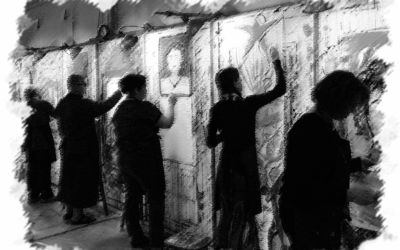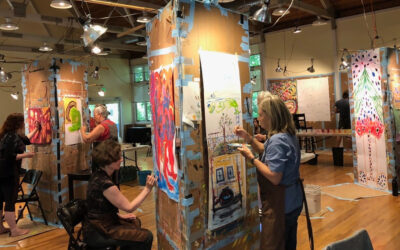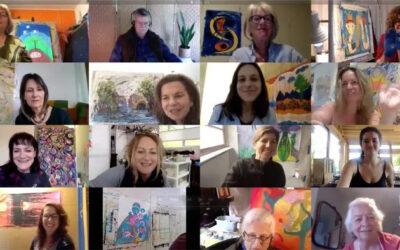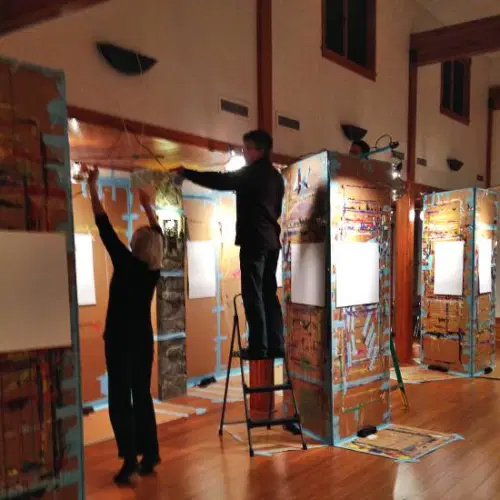
When “what is” is what is, “what is” is no longer what is. ~ J. Krishnamurti
I was once teaching a workshop at a retreat center when I arrived to find the room far from ready. There’s much work to prepare the studio for a week-long painting course — lights, protective coverings for the floors and walls, paints, brushes, paper, water, chairs — and I was dismayed to discover the condition of the studio. On top of this, they had not given us the rooms they had promised.
We had only a few hours before dinner, after which the first session would begin. My assistants and I worked nonstop until dinnertime, and we still weren’t finished. I noticed my irritation and temper growing as we hurried to complete the setup. Things I would normally let slide added more fuel to my grumpiness, and by the time everyone went to eat, I was in no mood for socializing. I went to my room alone to munch on a cold sandwich leftover from lunch.
“Great,” I thought as I sat in my funk. “Thirty people are about to come together, looking forward to meeting me, full of enthusiasm after having traveled long distances to attend, and here I am grumpy and pissed off.” I started to worry about the opening talk, feeling some performance pressure. This woke me up. It was a sure sign I was out of touch and needed to come back home. But what could I do? I was just plain angry. In fact I was fiercely angry, I felt like biting everybody’s head off.

Dare to Start Where You Are
As I acknowledged the anger, I realized there is a powerful energy around fierceness. I was indeed feeling fierce. I could be really fierce if I let myself be. Already this was better than feeling angry. In fact, the anger seemed to have been hiding my need to be fierce. What I really felt was bold, forceful, and unwilling to accept bullshit.
“Now I’m actually starting to like this,” I thought, “but how do I go into a new group feeling fierce? I’ll alienate everyone at the start. They’ll think I’m a bossy, controlling jerk. Well, I know enough to trust the energy. After all, that’s what I’m teaching, so let’s see what happens.” Walking to the studio it felt good to consider how fierce I could actually be.
It turned out the ferocity laying unexpressed and disguised as anger had a wonderful sense of humor about it. Instead of being bossy and controlling, fierceness appeared with a delightful take-no-prisoners trickster voice that kept us all on our toes for the entire week. The energy was contagious, and by the end everyone was revealing the face of their own outrageous wisdom in unique and surprising ways. I was impressed by this radical turnaround, and it supported my trust in going toward the moment.
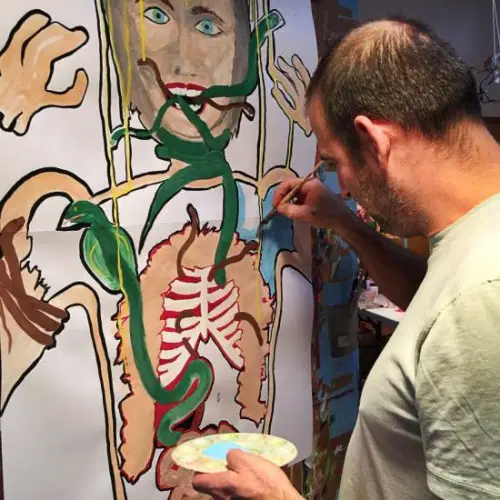
The Power of “Making It Worse”
“The way out is in.” I frequently offer this cryptic advice to someone who’s in a painting crisis. On one hand, I know they’re in difficulty and want out. So it appeals on that level. But it’s actually a koan of sorts, because you can’t really go in if you’re wanting out. The advice places you in an interesting quandary: It sounds good and on some level it rings true, so you have an urge to try it. But once entertained — which means moving toward that which disturbs you — a shift happens in which you’re no longer looking for the way out. The very thing you were resisting takes on a different quality, and the conflict mysteriously vanishes.
In painting, this experience is very accessible. Many images carry a disquieting feeling when they arise. It can be liberating to exaggerate these images and feelings, blowing them out of proportion. For example, you can repeat the disturbing image or color, doing way “too much” of it. If the painting appears ugly, you can make it uglier. If it’s too crowded you can stuff even more into it. If it’s meaningless and superficial, you can make it more so.
This is the power of going with the energy, and it feels good to do it. Once someone starts, I’ll often do some cheerleading. “Make it worse” I suggest. “How disgusting can it actually get? Make it more chaotic!” Given permission, the images will often fly thick and heavy, covering the painting with the offending color and shape. Released from the conflict of having to deny what’s going on in the feeling, the energy all flows together, and there’s a delight in how “bad” you can actually make it.
A deep wisdom flows through even the most objectionable circumstances, if we but stop and listen to what is truly calling us instead of just reacting. When we finally drop the pretension of knowing what should happen next and we let “what is” be what is, we are free.

More Information
This article is an excerpt from Stewart’s upcoming interactive online course, Introduction to Facilitating Process Arts. Presented in three interactive modules including video lessons and live web conferences, this course will help you incorporate the facilitation practices of process painting into your own ways of working with others. It’s designed to support therapists, art instructors, and teachers and guides of all kinds. The class will include many of the methods developed by Stewart over decades that have effectively guided people on a journey of inspiration, creativity, growth and change.
If you’d like to receive a notice when the course becomes publicly available, please

